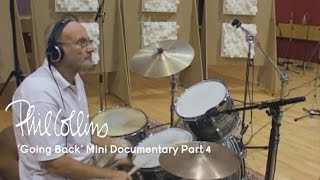Wednesday, 24 December, 2025г.
















Где искать: по сайтам Запорожской области, статьи, видео ролики
пример: покупка автомобиля в Запорожье
Home Inspection - Foundations - Part 2 of 3
http://www.homeownerseries.com
This is video #2 of a 3-part series. The videos are:
Part 1 = http://youtu.be/MS6YeCC4nJI
Part 2 = http://youtu.be/gEe2ydRSe70
Part 3 = http://youtu.be/fbn_7CuLbhM
To watch the Foundations Playlist = http://www.youtube.com/view_play_list?p=03AB69255B51E5D6
Slab
If your home is built with a concrete slab inspect the exposed cement when and where available. Flooring is often in place before you have a chance to see the concrete slab so look elsewhere in the home like the garage or while doing renovations. The slab itself should be level and free of any cracks. Small cracks called hairline cracks are normal and may form during the concrete's curing process. Any cracks large enough you can stick a pencil into, should be inspected professionally by a structural engineer. On this foundation wall you can see where the anchor bolt was placed to close to the edge of the foundation wall, causing the concrete to later chip off and the bolt to rust. This type of problem should be fixed with an epoxy made for sealing cement.
Crawlspace
In homes built over a crawlspace, it may be possible to look or even crawl under the home to inspect the condition of the foundation on a much more detailed scale. The first thing to inspect is whether or not the soil under your home is dry. This soil is here is extremely dry which is a good sign. Water promotes mold and dry rot in wood and when in contact with cement leaches out minerals deteriorating its structural integrity over time. While inspecting this crawl space a plastic drainpipe for an icemaker was found, apparently draining a constant supply of water into the supporting soil. This whole area of the house was extremely muddy and raises serious questions as to why the pipe was placed there and what damage the water has caused. If water has been present in the crawlspace you may notice mineral or salt deposits on the foundation walls or concrete footings.
The foundation's perimeter walls, if not properly sealed will develop efflorescence, which are salt deposits. Here you can see large salt deposits that were found in this home's crawl space. Garden water from above seeped through this foundation wall leaving its mineral trail. Remember, it is important to remedy any water problems as soon as possible.
Modern home science now suggests that crawl spaces should be sealed from the outside, insulated, heated, and cooled along with the rest of the house. This technique is designed to prevent mold and mushrooms from growing in the dark confines of the home's crawl space, requiring extremely expensive repairs.
The other major concern with masonry especially your foundation is the presence of any cracks. These cracks indicate shifts between the footings underneath the foundation wall either caused from ground settling or environmental changes. This is an ideal wall and the overall appearance is in good condition. If you discover any cracks or noticeable unevenness in the foundation contact your structural engineer.
Lastly while under the home inspect the wooden joists that support the 1st floor. Check for any dry rot or insect damage. Make sure that all the wood looks clean and in good condition. Check all of the home's exposed hardware for anything that looks amiss.
Похожие видео
Мой аккаунт


 У вашего броузера проблема в совместимости с HTML5
У вашего броузера проблема в совместимости с HTML5


